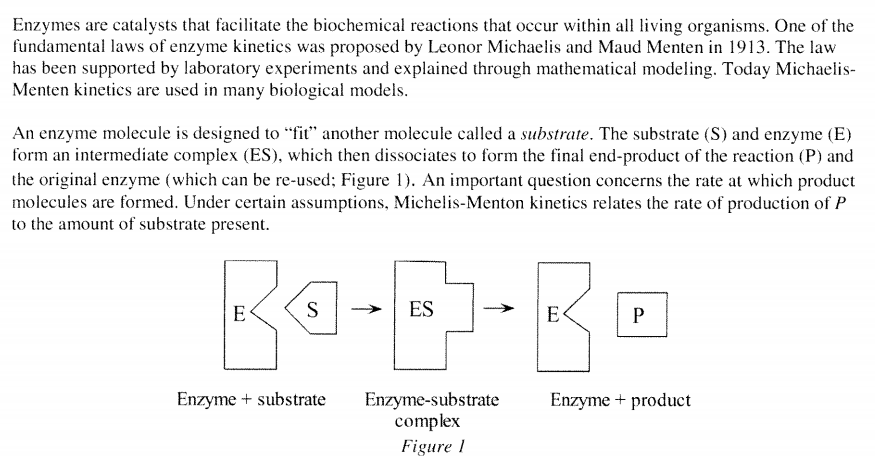Answered step by step
Verified Expert Solution
Question
1 Approved Answer
Enzymes are catalysts that facilitate the biochemical reactions that occur within all living organisms. One of the fundamental laws of enzyme kinetics was proposed


Enzymes are catalysts that facilitate the biochemical reactions that occur within all living organisms. One of the fundamental laws of enzyme kinetics was proposed by Leonor Michaelis and Maud Menten in 1913. The law has been supported by laboratory experiments and explained through mathematical modeling. Today Michaelis- Menten kinetics are used in many biological models. An enzyme molecule is designed to "fit" another molecule called a substrate. The substrate (S) and enzyme (E) form an intermediate complex (ES), which then dissociates to form the final end-product of the reaction (P) and the original enzyme (which can be re-used; Figure 1). An important question concerns the rate at which product molecules are formed. Under certain assumptions, Michelis-Menton kinetics relates the rate of production of P to the amount of substrate present. BO-D-RO ES E S Enzyme + substrate Enzyme-substrate complex Figure 1 E P Enzyme + product 2. Compute R'(s) and confirm that R is an increasing function. 3. What does the function mean biologically? As the initial concentration of the substrate s increases, what is the effect on the production rate of P? 4. Now let's interpret the constants V and K. Evaluate lim R(s). Explain why V is the maximum production rate. Is there any value of s for which the production rate equals V? 5. How does the shape of the graph of R change if V increases? if V decreases?
Step by Step Solution
★★★★★
3.42 Rating (155 Votes )
There are 3 Steps involved in it
Step: 1

Get Instant Access to Expert-Tailored Solutions
See step-by-step solutions with expert insights and AI powered tools for academic success
Step: 2

Step: 3

Ace Your Homework with AI
Get the answers you need in no time with our AI-driven, step-by-step assistance
Get Started


